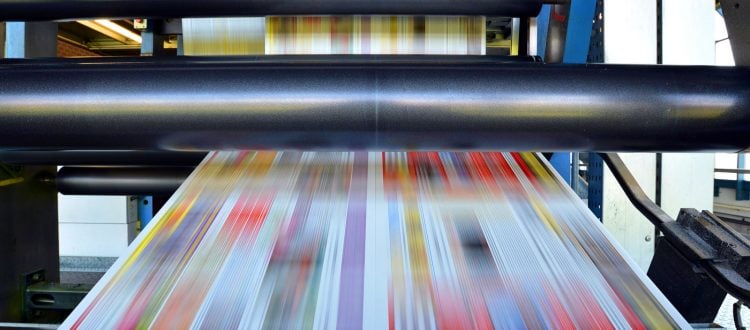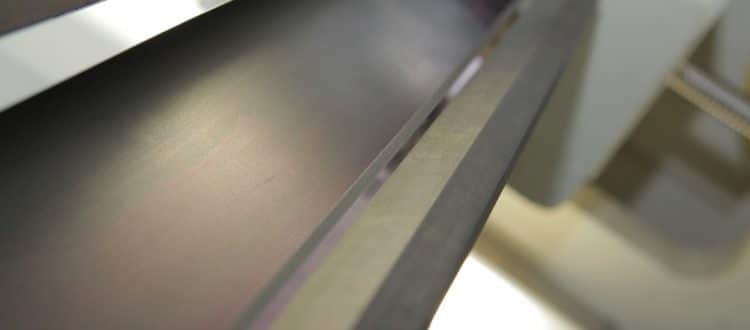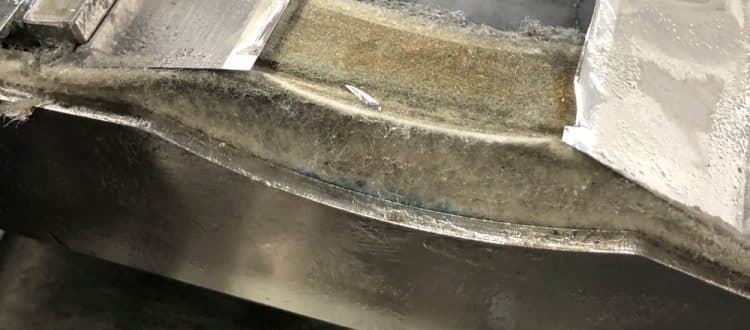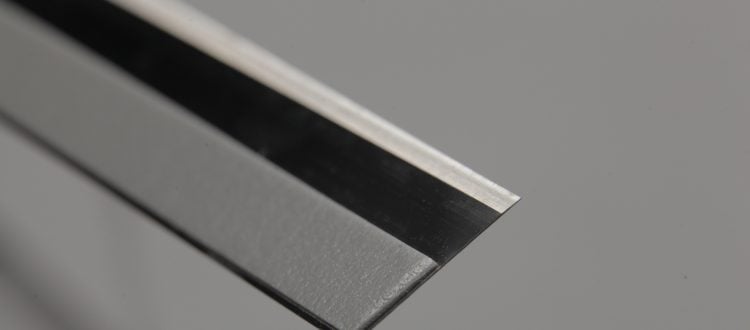One of the advantages of visiting printers throughout North America is that we get a first-hand look at an amazing range of approaches to just about everything to do with making packages and labels. It’s a fantastic educational process that we really value and the best part is that we’re able to share our expertise, work with people on best practices and collaboratively improve the information, best practices and ideas for all the shops we visit.
The Other Side of Blade Size
For example, we recently got a different take on the importance of blade size, but the surprise was width, not length. The shop we were in was having an ink contamination problem on just one deck of its big CI press. We finally traced it to a plastic containment blade that was much wider than needed. Now, you can be forgiven for not thinking of this as being a problem, and it tripped us up until we looked at the details. It turned out that the extra blade width meant that a portion of the blade was actually melting from friction against the roller. The melted plastic wound up fouling the ink in the chamber, causing flow issues and degraded print quality.
But, you’re saying, the filter should have caught at least some of the contaminant. Well, maybe, but as you probably know all too well, filters are not always changed as often as they are supposed to be. And in any case, the incorrect blade was causing a problem that was beyond the ability of the filter. So we flushed out all the bad ink, installed a correct width blade and the problem went away.
We learned that the wider blade had probably been put on because it was the only one available and the job had to be run. Although that choice made sense under the pressure of getting the job on press, it caused a problem that required immediate attention and brought production to a halt. More to the point, it showed why every blade installed must be correct for the press, the deck, and the application. Selecting the correct blade length is a top priority but width, as this example shows, can be just as important.
Pressure: Some is good. More is better. NOT!
One of the fascinating things about flexo presses is the remarkable interrelationship of all the parts. For example, another issue we encounter in mid- and wide-web presses is ink chamber pressures. It’s not unusual, for instance, for operators to run greater chamber pressures than necessary. Over and again, we find extra pressure almost inevitably leads to ink control problems with blades and end seals. Too much pressure adds stress to the end seals, putting you at risk of a blow out, which is a guaranteed time sink for your press crew. Too much pressure also makes your doctor blades work harder, requiring more mechanical pressure against the anilox roll and even impacts print quality. This is definitely a place where a ‘some is good, more is better’ approach does not apply! We recommend keeping chamber pressures as low as possible and talking with your press manufacturer or doctor blade and end seal supplier to determine the optimal chamber pressures for your equipment.
And while we’re talking end seals, be sure you don’t ignore these seemingly innocuous consumables. Seals are made of several different materials and come in a variety of styles and that can mean the difference between daily or weekly changes, as well as whether they leak a little, too much, or not at all. Talk with your ink system specialist to make sure the seals you choose will do what you need. We recommend changing seals at weekly press maintenance periods to avoid the unplanned excitement and down time of having a seal blow out in the middle of long run.
Wrap Your Blades
Other important details keep showing up. For example, even when using the correct chamber pressures on every deck customers find that chamber-wrap blades save time and money. These blades (U.S. Patent No. 6,796,231) have a plastic film that wraps around the blade holder and is fastened in place with double-sided tape. The film helps direct ink that would otherwise go to the doctor blade chamber onto the plastic film. The time and money-saving part comes at blade changeover or removal. The plastic wrap helps ensure chamber hardware—pins, bars, bolts, and clamping assembly—stays clean. This has a clear benefit, even if it saves just 10 or 15 minutes per job, because the time savings adds up quickly over the course of each shift and each week, making your balance sheet look a lot better.
Scheduled maintenance
All this talk about various blades and end seals brings to mind another topic that always comes up when we talk with business owners: the best way to control the ever-present costs of consumables and associated inventory. We completely understand this, which is why we encourage customers to establish schedules for changing consumables on a routine and predictable schedule. The idea is to replace critical items like blades and end seals before they are reach end of life, with the goal of ensuring consistent print quality and eliminating problems that could disrupt production. The exact schedule for this depends on your operation and the types of jobs and materials run. As ink system experts, we work with individual customers to determine schedules based on their needs and budgets. In many cases we have even developed schedules for individual presses based on how a machine is being used.
The topics described in this blog are some of the key details every printer should be aware of. They all matter, and we can help you understand them and take the steps needed to help your business remain as productive and profitable as possible.
